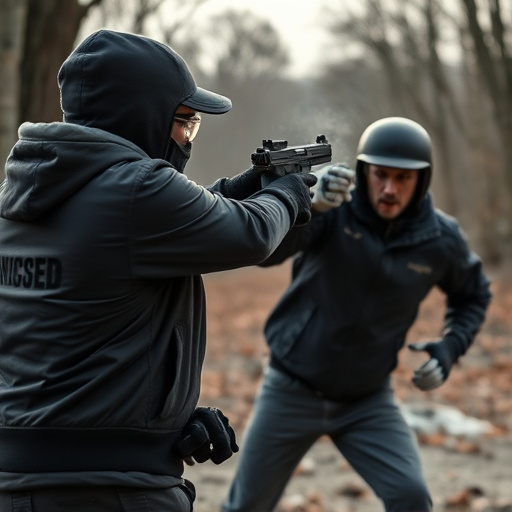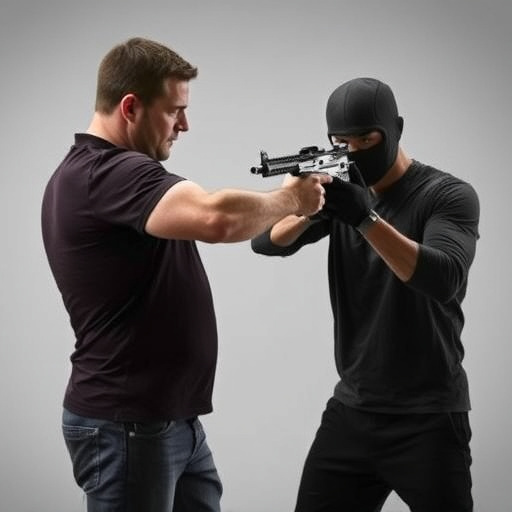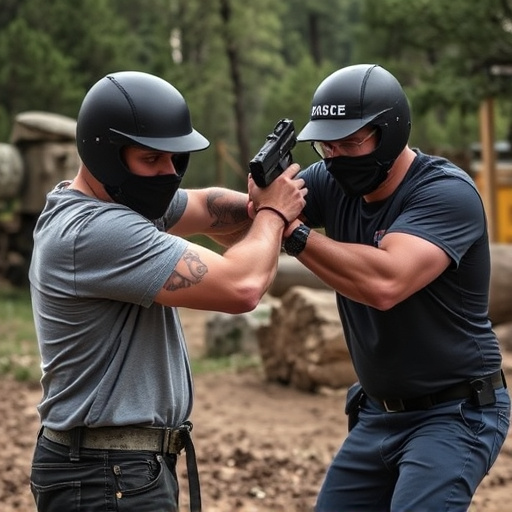The article explains that electrical current is the core of stun device functionality, with high-amp output and smart circuit designs ensuring their effectiveness. Stun guns utilize electric pulses to temporarily disable attackers while safety depends on craftsmanship, component quality, and price range for quality devices ($30-$100). Voltage and amperage are key performance indicators; balancing them ensures effective neutralization without causing harm to bystanders. Higher voltage and robust construction come at a higher cost due to enhanced effectiveness and market demand. Responsible use includes training, understanding laws, investing in quality with safety features, secure storage, and regular inspection.
“Unraveling the Science Behind Stun Devices: A Comprehensive Guide explores the intricate relationship between electrical current and their stunning effect. From the fundamental principles of electricity to the precise mechanisms employed in stun guns, this article demystifies how these devices create powerful shocks. We delve into the key components that enable current flow, analyzing the critical roles of voltage and amperage. Additionally, we examine factors influencing the price range for quality stun guns and offer essential safety practices for responsible handling.”
- Understanding Electrical Current: The Basis of Stun Device Functionality
- How Stun Devices Utilize Electricity to Create Shock
- Components That Facilitate Current Flow in Stun Guns
- The Role of Voltage and Amperage in Determining Stun Device Effectiveness
- Factors Influencing the Price Range for Quality Stun Guns
- Ensuring Safety: Best Practices for Handling Stun Devices
Understanding Electrical Current: The Basis of Stun Device Functionality

Understanding Electrical Current: The Basis of Stun Device Functionality
The functionality of a stun device, such as a stun gun, is fundamentally rooted in electricity and the way it flows. When we talk about electrical current, we’re referring to the movement of electrons from one atom or molecule to another. In a stun device, this flow of electrons is harnessed to create an intense electric pulse that delivers a powerful shock to the target. This electric pulse disrupts the normal functioning of muscles and nerves, causing temporary incapacitation.
The quality of a stun device, including its effectiveness in various scenarios, is directly tied to the design and efficiency of its electrical components. A price range for quality stun guns often includes advanced features like high-amp output, smart circuit designs, and durable materials that ensure consistent performance. These factors are crucial in maintaining a reliable current flow, which in turn enhances safety and reliability for users.
How Stun Devices Utilize Electricity to Create Shock

Stun devices, particularly stun guns, leverage electricity to deliver a powerful shock that disables an assailant temporarily. The process begins with a battery powering an electrical circuit within the device. When activated, a high-voltage, low-current electric pulse is released through electrodes at the tip of the stun gun. This pulse disrupts the neuromuscular communication in the target’s body, causing muscles to contract uncontrollably and leading to loss of balance, strength, and coordination. The shock is designed to be painful but not fatal, making it an effective non-lethal self-defense tool.
The quality of a stun device, including its effectiveness and safety features, is directly related to the craftsmanship and components used in its design. While price range for quality stun guns can vary widely, investment in a well-built device ensures reliable performance and maximum protection. Key factors to consider include electrode quality, pulse intensity, and safety mechanisms designed to minimize off-target shocks or accidental discharges.
Components That Facilitate Current Flow in Stun Guns

The electrical current flow in stun devices, particularly stun guns, is facilitated by several key components designed to efficiently deliver a powerful shock. These include high-quality capacitors that store and release electric charge quickly, ensuring a strong jolt when activated. Additionally, conductive materials like copper wires play a crucial role in enabling the rapid transmission of current from the power source to the output terminals.
The price range for quality stun guns varies based on their voltage output, weight, and overall design complexity. Higher-end models often incorporate advanced components that enhance both safety features and current flow efficiency. These devices may utilize more robust insulations and safety mechanisms like circuit breakers or ground fault protection, all of which contribute to better user experience and reliability.
The Role of Voltage and Amperage in Determining Stun Device Effectiveness

The effectiveness of a stun device, such as a stun gun, heavily relies on two key factors: voltage and amperage. Voltage, measured in volts, represents the force behind the electrical current. A higher voltage generally means a more powerful stun, capable of delivering a stronger shock and potentially incapacitating the target faster. Amperage, or the amount of electric current flowing through the device, also plays a significant role. Higher amperage can increase the intensity of the shock, ensuring that the target experiences a quicker and more severe response.
When considering a quality stun gun within a reasonable price range for such devices, it’s essential to look for products that strike a balance between voltage and amperage. A stun device with an adequate combination of these two parameters will be more effective in neutralizing a potential threat while also ensuring user safety. This balance is crucial as it allows the stun gun to deliver a powerful enough shock to deter an attacker without causing excessive harm or leaving lasting effects on an unintended target.
Factors Influencing the Price Range for Quality Stun Guns

Several factors significantly influence the price range for quality stun guns, making it crucial to understand these variables when considering a purchase. Firstly, the power and voltage of the stun device play a pivotal role in determining its effectiveness and, consequently, its price. Higher voltage and more powerful stun guns often come with a premium due to their advanced technology and ability to deliver a stronger shock. Secondly, the build quality and materials used in construction contribute to the overall cost. Devices with robust, durable designs, using high-quality metals and components, tend to be more expensive but offer superior performance and longevity.
Additionally, features such as LED lighting, different mode settings, and smart safety mechanisms enhance the functionality and appeal of stun guns, driving up their price points. Brand reputation and market demand also impact pricing; well-established brands with a proven track record may command higher prices based on consumer trust and demand. Lastly, certification and compliance standards set by regulatory bodies can affect manufacturing costs, which are often reflected in the final retail price.
Ensuring Safety: Best Practices for Handling Stun Devices

When handling stun devices, safety should be the top priority. Despite their non-lethal nature, stun guns or tasers can still cause significant pain and temporary incapacitation. It’s crucial to follow best practices to minimize risks, both for yourself and others. Always ensure proper training and familiarize yourself with local laws regarding stun device usage. Quality stun guns within a reasonable price range ($30-$100) often come with safety features like automatic shut-off mechanisms and built-in safety switches, enhancing user control.
Proper storage is another critical aspect. Keep stun devices out of reach of children and unauthorized individuals. Store them in secure locations, away from extreme temperatures and direct sunlight. Regularly inspect your stun device for any signs of damage or malfunction, ensuring it’s always operational and reliable. Remember, these simple precautions can significantly contribute to responsible and safe use, making stun devices effective personal safety tools.
In understanding the electrical current flow in stun devices, we’ve explored fundamental principles, their operational mechanics, and the critical components that ensure effective shock delivery. The interplay of voltage and amperage significantly influences device performance. Additionally, factors like design complexity and material quality collectively determine the price range for quality stun guns, reflecting their durability and safety features. Adhering to best practices for handling these devices is paramount to ensure user safety and optimal functionality.
